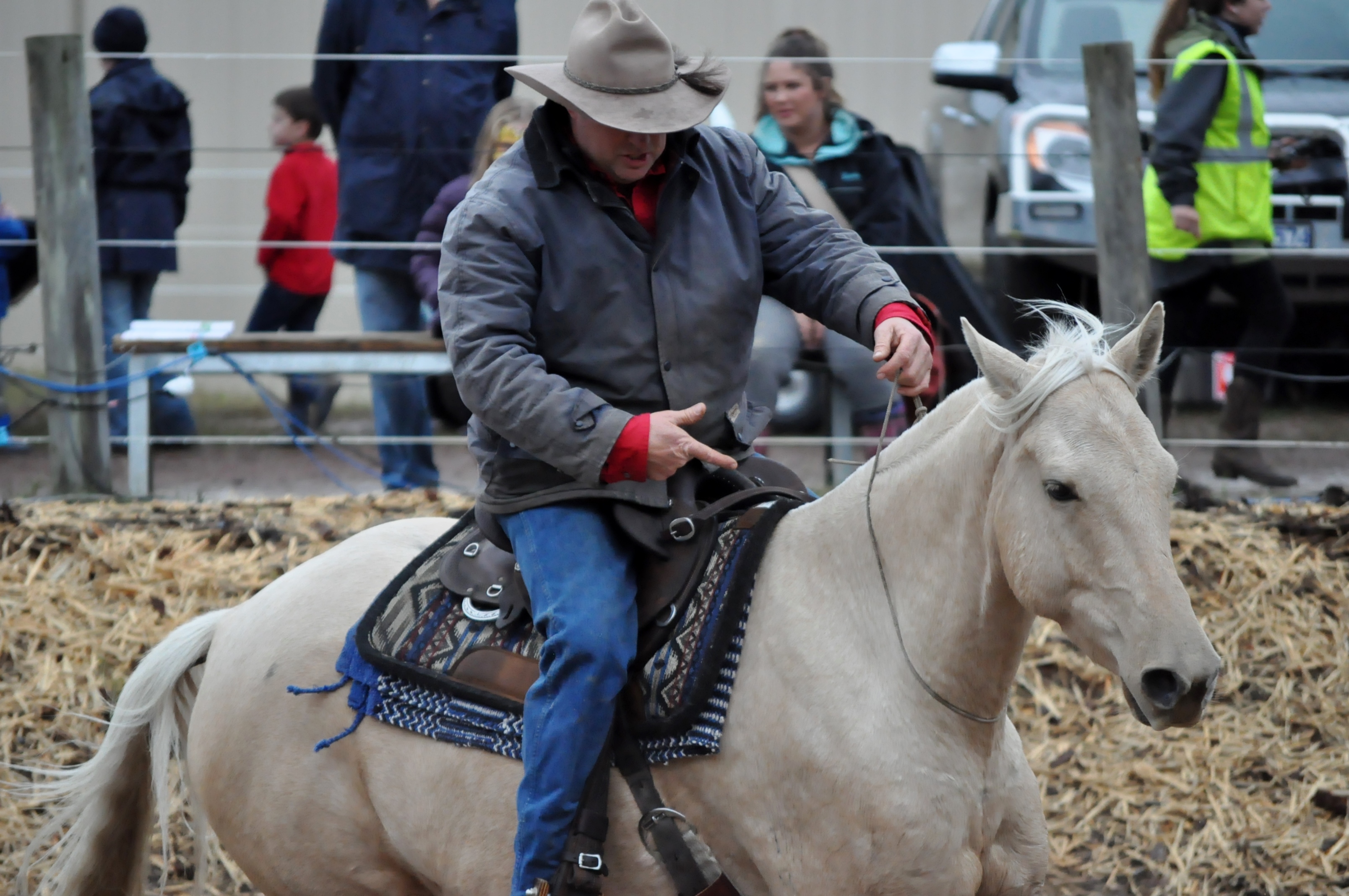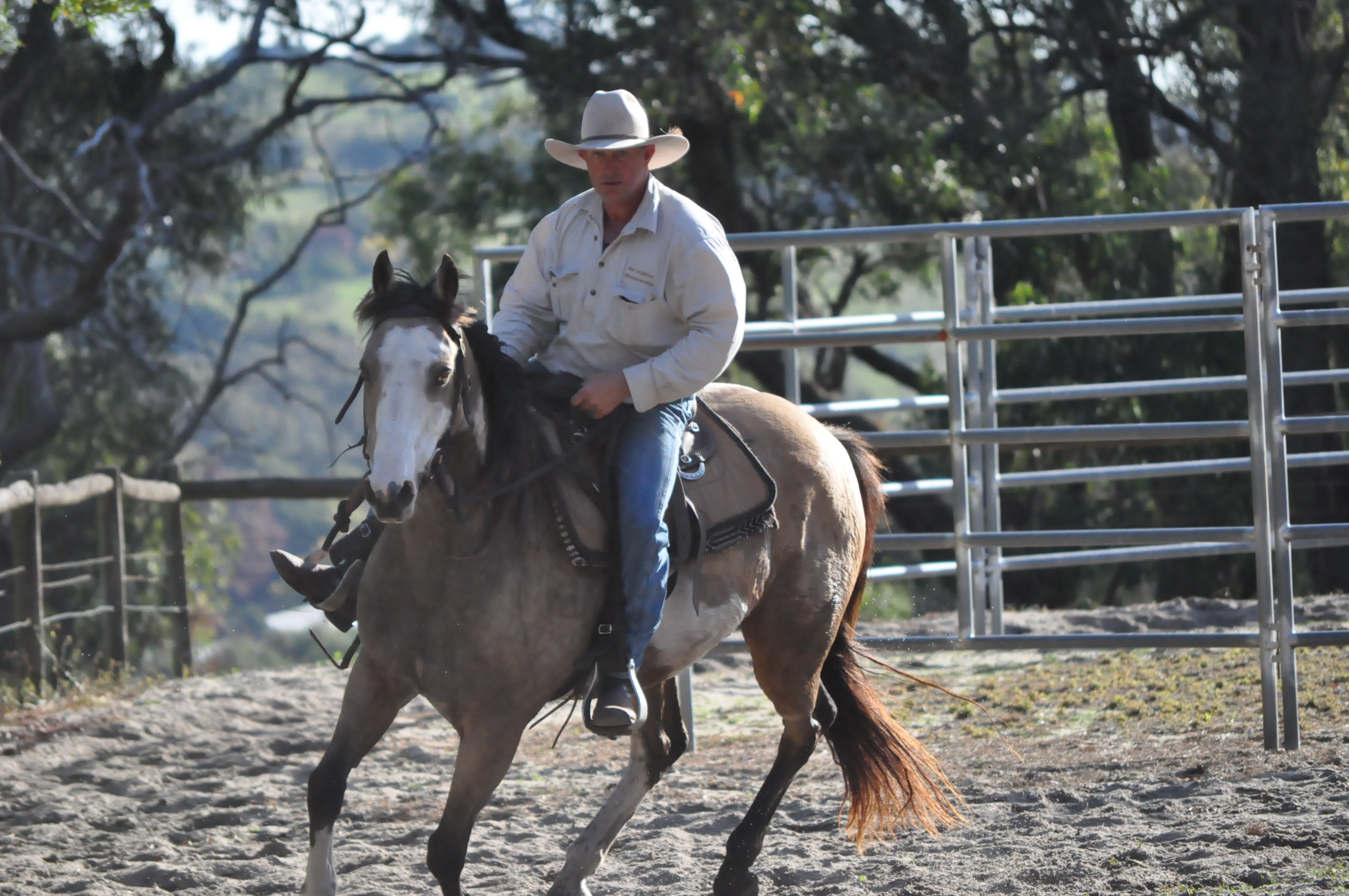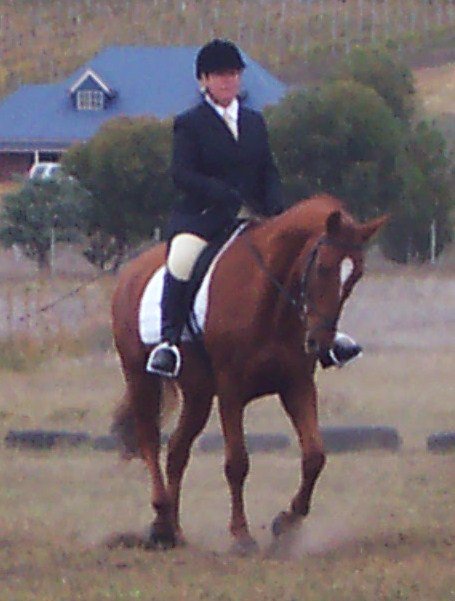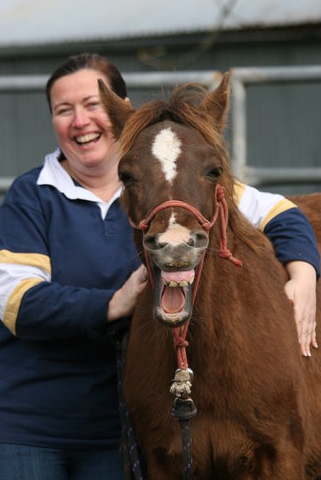

I’ll start by saying the following thoughts for horse people and essential elements are based on a simple analysis of what I see and know about myself and how this might relate to other riders. These words and thoughts are more about me, and how I perceive myself in my relationship to horses and those who I’ve been fortunate to have encountered on my journey. It’s not written to be an intellectual monologue or scientific thesis; it’s designed to make me think about where I’m at, and to share my journey with others who care to read. I write in language I understand, in plain simple English terms because at the end of the day it will be me re-reading these thoughts from time to time.
Life is already complicated enough without over complicating the language we use to record it. These words serve to remind me of those moments when I had enough clarity of thought in my horsemanship journey to write in a way that will remind me later if I lose sight of where I want to go.
To me, horsemanship encompasses all disciplines, styles, techniques, groundwork and ridden, husbandry, psychology, physiology, in fact every interaction we ever have with a horse either directly or indirectly to me is horsemanship. It’s not defined by competition, attire, equipment or social or geographic boundaries. However, I believe a horseman or horsewoman is someone who embraces all aspects of horsemanship, and throws in a whole heap of themselves in an empathetic, sympathetic, encouraging, educational, respectful, thoughtful and open-minded manner.
I have read and studied behavioural aspects of self-improvement and self-discovery (helps having been raised by an incredibly talented mother, who has dedicated the last 50 years of her life to the study of health, sub-conscious learning and development, and personal coaching), and my background in business and risk management. I am also fortunate to have had exposure to extremes of behaviour in both horse and horseman, and seen both the positive and negative results. I have by association had great opportunities to look at both myself and the students who have worked with us over the years, and gained some knowledge and insight from some great horse people. For them I am grateful.
Whatever form of horsemanship philosophy, program, values or techniques people choose to follow, here are a few essential elements I need to remind myself of from time to time.
Defining Success
This is a short one, whatever makes you feel like you have achieved something, however small. It’s what makes you feel good.
Great success is always built on those small achievements. From just leading your horse without conflict, to getting that footfall balanced and soft, to riding that swing to get your best score in a dressage test, don’t ever underestimate those first small achievements, or fail to celebrate them. Don’t ever forget that, even when you hit a roadblock, there is always a small achievement made even if you learn what not to do.
Lesson: Success is not material or always obvious – but when you feel it, celebrate!
The semantics debate
This is one area that I struggle with. I’ve discovered that what I read and hear and how I interpret those words may sometimes have a different meaning to me from that intended. This is particularly evident when discussions arise between people with different belief systems, mind-sets, learning styles, education, experience or backgrounds. Throw in social media discussions, and it can not only be confusing, but very confronting.
Horse training discussion in our household sometimes requires clarification and agreement on a term or explanation, and we talk through these perspectives or technical interpretations to get on the same page. It’s taught me to find language that enables the discovery of the outcome sought rather than the use of stringent language or indoctrinated interpretation. It’s also enabled me to take instruction from my husband, who I consider a great teacher and proponent of the art of horsemanship, confident that discussion regarding how, what and when I should be doing something will be met with an explanation that resonates with me. Ever notice how a good teacher can explain the same thing in more than one way, and a group of students will all understand and achieve the same outcome. A great teacher never stops honing his craft, and exploring new ideas, techniques and ways to impart this in a clear and concise manner to their students. Language, learning and communication styles vary, not much wonder it all very confusing. This has taught me to ask for clarity, and to seek out teachers who value this.
Even for those who speak it, the English language can be complicated and not always overly clear, and when translated or communicated the intention or meaning can be distorted, misconstrued or totally misunderstood. There is often more than one meaning depending on the context in which it is used, by the use of punctuation or emphasis or inflection in speech. Throw in the body language in the physical presentation, and it’s a complex form of communication which can be altered to suit the purpose of delivery and the intention of the message.
There is no clear and concise dictionary on the use of common horsemanship or training terms, nor can many of them agree on a clear definition. Certainly, there are technical and scientific definitions in regards to areas such as specific discipline training movements, biomechanics, veterinary science, but how to define and interpret human emotions and values when it comes to horsemanship is diverse.
Each horsemanship book I have read, or video watched, offers differing philosophies and techniques, some vary significantly and others following a similar process. I doubt you would get consensus on them all to agree on everything, although if you read enough of them you will notice commonalities in philosophy. Sifting through them all isn’t an easy task for the moderately experienced, let along the novice.
As the art of horsemanship is subjective and interpretative, taught, performed and conveyed by people with different belief systems, backgrounds, and theories, agreeing on a happy medium can be difficult. People will by nature be drawn to those who share the same belief system, share core values, and in short, make them feel good about what they are doing. There is no one way, no right way, there are a combination of ways that work together, and there are those that clearly have no place in good horsemanship.
This has taught me to seek clarity where there is misunderstanding, and to seek out teachers who value this discussion. And it reminds me to be patient as I work through the explanation with a willing student, so that we all end up on the same page. My husband says “If people get confused by other people imagine how confused horses get by people.” He is right!
Lesson: all knowledge is valuable, seek clarification, and only experience will tell you what works for you.
How you are; not who you are
There is no doubt that most people have the best intentions when it comes to their horsemanship, usually based on their personal set of values. The vast majority of horse owners and those who work with them have the best interests of horse welfare first and foremost in their minds. A variable is what’s in the best interests of the welfare of the horse is debatable, and there is vast polarization in what is best. Whatever training techniques you choose, methods, programs or style, either based on your own experience or on the lessons and learnings from others is fine, be mindful of what is in the best interests of the physical and physiological welfare of the horse. If it impacts on how you are and your comfort in progressing down that path, you might need to re-evaluate your direction.
Let’s not forget safety, make sure that whatever suits your beliefs is also safe for you and the horse. There is something soulful in taking those moments of just being with your horse, as long as that being isn’t being run over, being pushed aside, being dominated at feed time or being treated like the lowest ranking social member of the herd.
I’ve been known to tell myself to be more courageous (thanks to a great horsewoman who many years ago encouraged me with three words written on a dressage test “be more adventurous”) and take the handbrake off and just ride and live life with more purpose. Doesn’t mean I’m reckless, I’m conservative by nature, but if I’m true to myself working with horses does require certain fortitude to remain safe.
I often see and have people tell me they are not assertive personality people generally in their lives, and this can create issues when working with horses. For some reason, the term “assertive” is sometimes construed in horsemanship in a negative context, perceived as aggressive, dogmatic, demanding or dominant. If you were to look up the definition of assertive, you would find many different terms used to describe an assertive person (including those quoted). What happens when this term is used and it doesn’t fit with your own personal definition and is in conflict with your core values? No-one including me, would like to be perceived as aggressive, dogmatic or demanding, despite the many positive aspects of being an assertive person.
Others are professionally assertive, but when it comes to their relationship with their horse they adopt a more nurturing and sometimes even submissive role in their relationship. Sometimes it’s tough being tough in all aspects of your life, and it’s hard work when this conflicts with your natural persona.
If I use the term “confident presence” as a substitute for assertive when dealing with horses, it conveys a different message, one of self-reliance and certainty. In most of my reading and based on my interpretation, this is a good mid-ground substitute. If you describe yourself as being a person with “confident presence”, that’s a real positive.
Developing confident presence in horsemanship for some takes time. It mostly comes from experience; those who are by nature more confident tend to get there more quickly under instruction. For those who don’t have this by nature, it needs to be nurtured and developed, in such a way as to not manifest in frustration, aggression, disappointment or anger. How you are inside, how your body moves and how you feel about things are all things your horse will notice. They won’t be offended by your confident presence; in fact they will come to embrace you as the one who keeps them safe. Work on how you feel when doing anything around your horse, breathe deeply and relax, be fair in your actions and your reactions.
I don’t’ think there is any dispute that working with a horse requires confident presence. It is the same quality demonstrated by the lead horse in a herd. It’s a great positive in life overall, and one that can only improve your overall horsemanship.
Lesson: Having confident presence is important to my horse, and how it feels and responds when with me.
Respect
There, I typed it! One of the most controversial terms used in horsemanship. It is loved by many and treated with distain by others. So what does it mean to me, and why is it so important? Short answer, to me it’s that I care about my well-being and my horse, and that staying safe for both of us matters. And not that it matters a little bit, it matters a whole lot.
As human beings and particularly as a parent, we try to instill the value of respect for others in our children. Or at least we hope that we do and that they carry this with them as a core value in the way they live their life and interact with others. Respect is a two way thing. Without both sides equally co-operating and demonstrating consideration for the other, it fails. There is a general consensus, respect is given, and trust is earned. Respect can just as easily be taken away, as trust can be lost.
I could look for an alternative term, we could call it mutual co-operation, I sure like to think that I work as a team with my horse, but at the end of the day in my horse world I am responsible for most of the critical decisions. In my world, demonstrating consistent confident presence in training creates respect. It’s not about force, dominance, negative or positive reinforcement (there’s a thesis right there but I think it’s been done enough for those interested to read up on ), and a whole host of other training terminology and theory that the average person can not only be confused by but get totally lost in.
It’s not respect for equipment, but respect for me. It’s my horse clearly understanding, albeit with the allowance for mistakes during those early training sessions, that my decisions are good ones, and that he trusts me to make them. That’s respect to me in horse training. I don’t make him respect me, it has to be given, and it comes with consistent training, the way I move, subtle or direct body language, my thoughts, and feel and timing (that’s what to do, how to do it and when to do it and just as important when to release or stop doing it), and doing this consistently. That means, all the time. It’s not ok to be inconsistent; it’s confusing to my horse.
This respect and trust is not a given, and cannot be forced. The more effectively you can demonstrate to a horse you are a person with confident presence, and behave in a consistent, empathetic and trustworthy manner, the shorter the journey to achieving respect and trust.
Lesson: Respect is not a negative thing, when taught and encouraged with empathy, feel and timing it fosters trust with benefits to both horseman and horse.
Discover your “why”
I can’t take credit for this, it originates from a TED talk by Simon Sinek – ‘How great leaders inspire action’. It provoked me to think a lot about my personal values, how they interlink with my professional life, and the direction in which I choose to travel.
Your “why” is what motivates you. It’s not material based, not wealth based and it’s personal. It forms the basis for your values.
I started to think about my “why” in relation to horsemanship and what it means to me a while ago. It’s not about winning ribbons, trophies, being famous or wealthy, it’s that driving essence inside which is almost undefinable. Without it, passion doesn’t ignite. For me, it’s what makes me a better person. Horsemanship brings out some of my greatest qualities, and exposes my vulnerabilities. It is the exhilaration and satisfaction when something clicks, and the fear of failure when it doesn’t. There is nothing else like it in my world. Sometimes it is raw, and my horse sees it all. I can’t hide this from my horse.
Ask yourself, “why”. There is a thrill associated with horsemanship for some, and a quiet calmness for others. For some it’s just being around them invokes their “why”, for others they need to strip back the gloss and make this discovery. Your “why” is personal to you, it’s not competitive or judgmental, it might only make sense to you, but that is its intention and purpose on this journey. It’s not about what you want, plenty of people want to have a great relationship with their horse, but they need to ask themselves why. Why is it so important that we dedicate so much time to this pursuit? It’s not just a recreational activity, horse ownership and training is a demanding, time-consuming and costly exercise, good weather and bad, so why do we do it?
Find your why, and you will open the door to a whole world of self-belief and confident presence.
Lesson: Take time to identify your “why” and revisit it often. It will inspire and motivate you to work through difficult times and make you a better horseman or horsewoman.
 So, these are my thoughts that I need to record for now. From time to time I’ll revisit them as a reminder of what makes me function as a better student of the art.
So, these are my thoughts that I need to record for now. From time to time I’ll revisit them as a reminder of what makes me function as a better student of the art.
Horsemanship is a journey, how far and in what direction you go is up to you.
For me that journey is forward, without forward there is no progression, and as always my progression is made one step at a time.
Liz Leighton © 4 April 2015


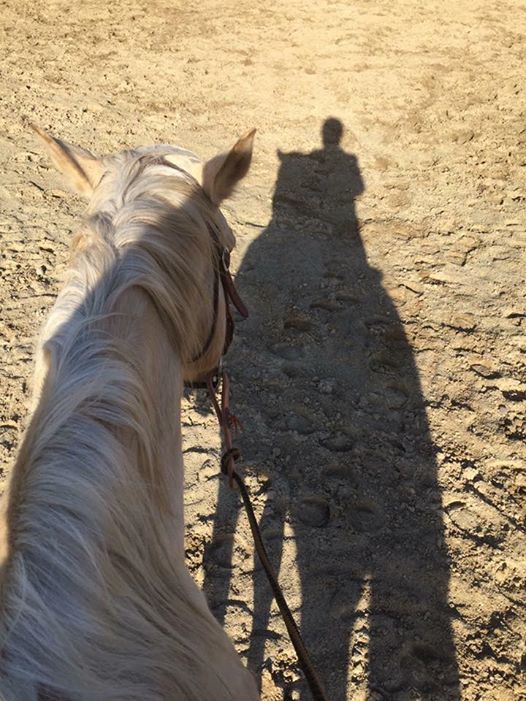 We live in a era of instant gratification, with so much technology at our fingertips, and many things take less time to achieve or obtain than ever before.
We live in a era of instant gratification, with so much technology at our fingertips, and many things take less time to achieve or obtain than ever before.








